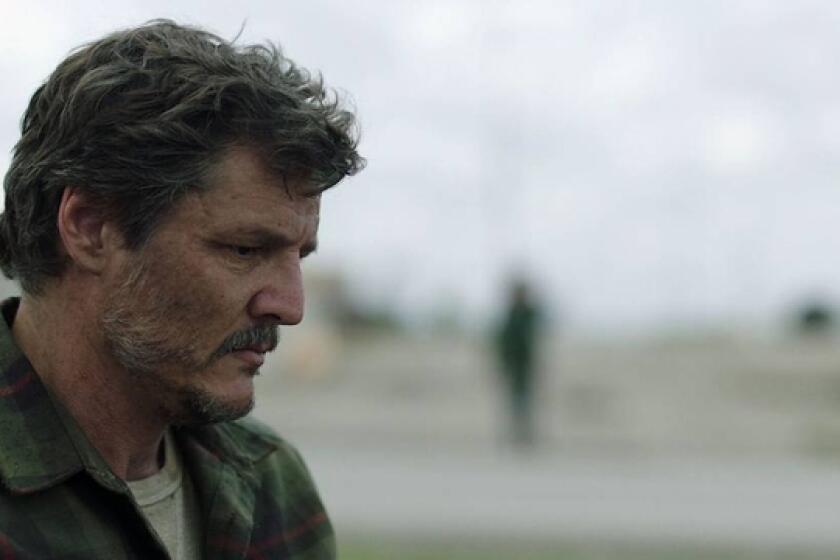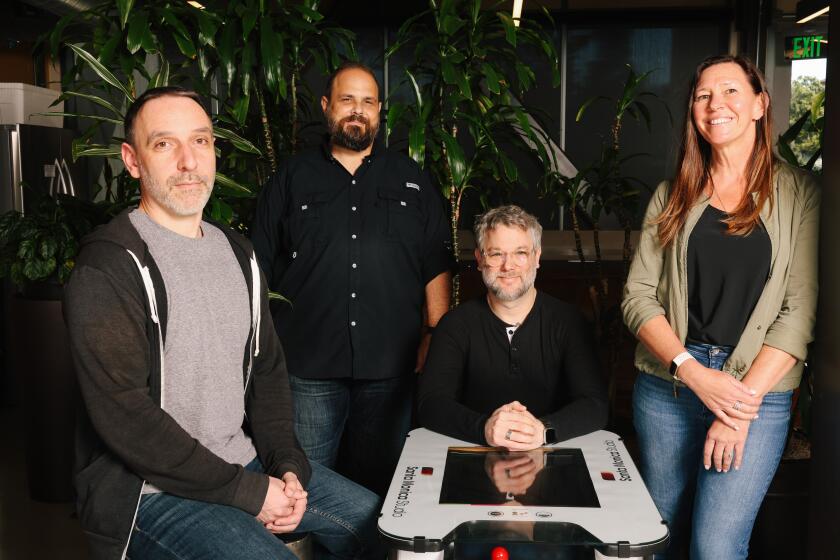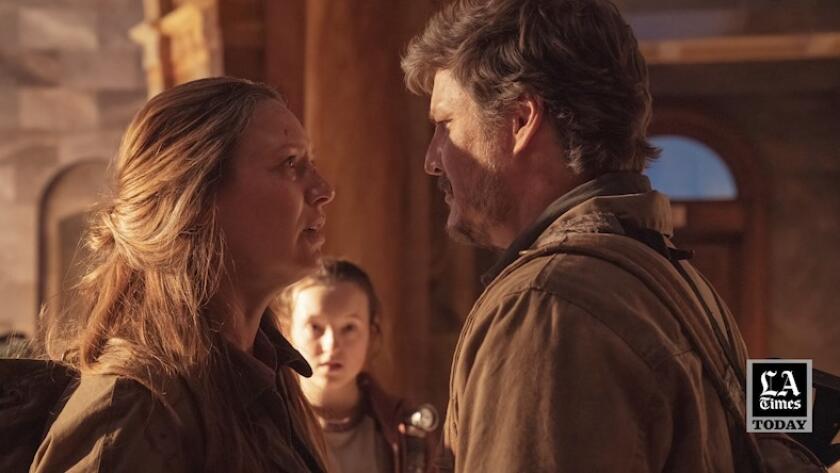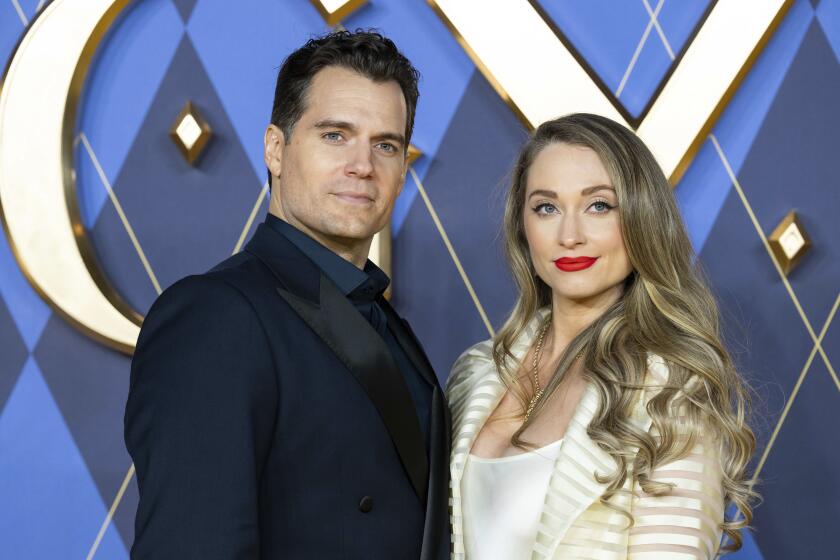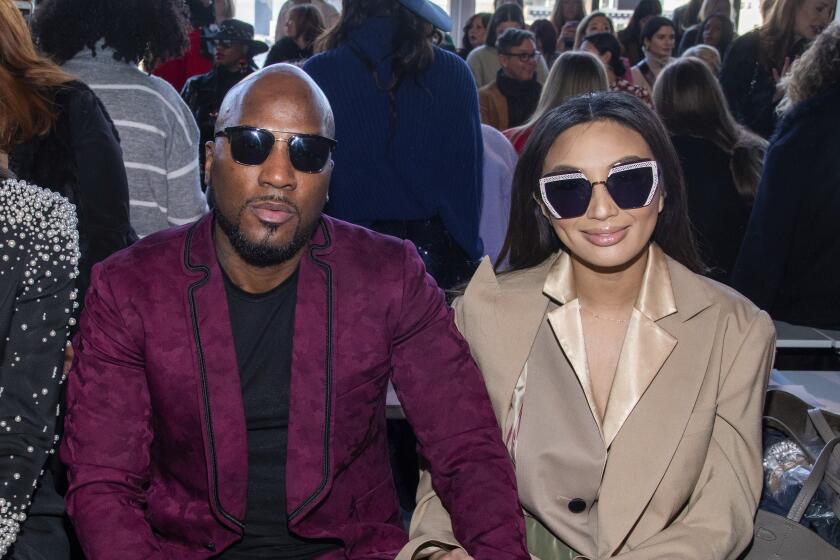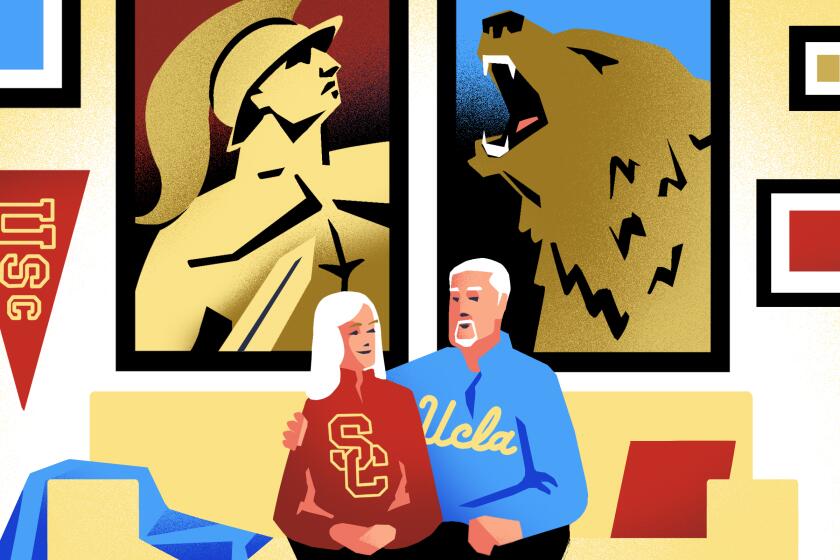How ‘The Last of Us’ changed gaming, strained relationships and spawned an empire

Sony’s landmark 2013 game “The Last of Us” didn’t make it easy on players. But the difficulty curve was more emotional than technical, for the game delivered the zombie genre at its most heady, grief-stricken and intimate.
How it started: Grim.
Joel, a down-on-his-luck single dad, can’t catch a break. Then comes a viral outburst that has all of Texas going mad trying to avoid flesh eaters, which sends him and his daughter on the run. Full credits haven’t even rolled before the child doesn’t make it — shot dead on government orders.
While there’s no shortage of violence in the video game space, “The Last of Us” did it differently. Action was treated as something to be avoided; Joel’s trigger hand would wobble, a reluctant shot in a world in which each close kill would come with suffering. In a genre where action and story were often disconnected — serious cinematic scenes against cartoonish violence — “The Last of Us” wanted to keep it real. Camera angles were often closely cropped, framing enemies — and infected humans — not as obstacles but as tragedies.
And it worked. The game went on to sell about 20 million copies for Sony’s PlayStation consoles and spawned both a limited-run comic and a hit sequel. Now, “The Last of Us” is a hotly anticipated HBO series starring Pedro Pascal as Joel, the latest in a long line of prestigious bleak TV.
But the hype preceding the HBO series, which premieres Sunday, has less to do with the checkered past of video game adaptations or the pedigree of the show’s co-creator, “Chernobyl” architect Craig Mazin. No, it’s because “The Last of Us” always felt like a mission statement, a game that wanted to prove that big-budget action shooters — “AAA games” in industry speak — could not only have a sense of gravitas but could advance the medium in narrative, gameplay and representation. “The Last of Us” raised moral quandaries about choice, or the lack thereof, in interactive entertainment, questioned masculinity in games and ultimately proved to the industry that a gay teenage girl could be a protagonist in a genre overrun with tired machismo.
‘The Last of Us,’ HBO’s new prestige drama based on the video game, stands apart from other zombie fare despite a shared post-apocalyptic premise.
“What ‘The Last of Us’ did for U.S. games is it showed that we could handle tremendous complexity in a narrative structure about social issues,” says Jennifer deWinter, a game scholar, author and dean at the Illinois Institute of Technology. “And in an action game, a game historically made for the ‘hardcore player,’ ‘The Last of Us’ starts helping us rethink what we can do in AAA games.”
Neil Druckmann, the game’s writer and the show’s co-creator, still speaks proudly of the way “The Last of Us” pushed boundaries, whether that was in its diversity or simply in its willingness to nudge players to feel the extremities of anguish.
“You almost never showed a kid dying in a video game,” Druckmann says when asked about the game’s difficult opening moments. “That was such a taboo thing. ... One thing ‘Grand Theft Auto’ doesn’t have are kids in that world. But if we’re going to tell a story about the love a parent has for their child, we have to deal with the worst fear a parent has, which is any sort of harm coming to their child, and realize that through that opening sequence. Our approach was, as much as we can, let’s treat it as grounded as possible and as realistic as possible.”
To Druckmann, 44, the story was personal. He began developing what would become “The Last of Us” while a master’s student at Carnegie Mellon University. Long before pitching it to Sony-owned development studio Naughty Dog, at the time known best for its “Indiana Jones”-inspired “Uncharted” series, Druckmann had tried to spin the story into a comic.
“It was always about the sacrifices my parents have made,” Druckmann, an Israeli immigrant, says. “As I got older, and came closer to making it as a game, I started thinking about having my own kids and the fear of raising a kid and what could happen. While making the game, my daughter was born, and that added another layer of complexity to how I approached those characters. There’s something about living some of the experience that your characters have, to imbue it with more authenticity.
“Obviously,” Druckmann continues, “I’ve never murdered a person, so I don’t quite have that experience.”
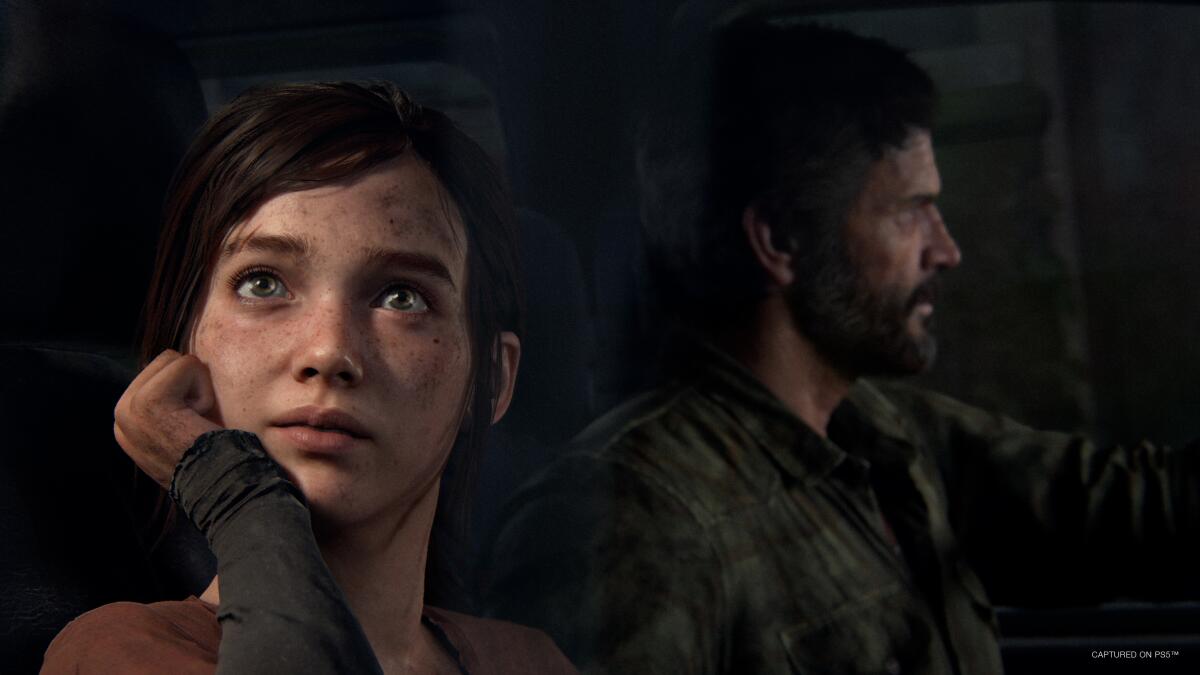
‘This was a game we hadn’t played’
After its harrowing beginning, “The Last of Us” — both the game and the HBO series — jumps 20 years into the future, where an even more hardened Joel has failed to process his grief over losing his daughter. This is when he meets Ellie, a 14-year-old he’s hired to smuggle halfway across the country. Played by Bella Ramsey in the series, Ellie is bitten but not turned, and is seen as a potential key to a vaccine: a cure, at long last, for a broken world. This is when “The Last of Us” begins to shine, as tension often comes from an underutilized gameplay tactic: conversation.
“The Last of Us” was the rare game that sought to avoid action, letting Ellie pester Joel with questions about what it was like to be alive before the apocalypse. Did he frequent coffee shops? Did he ever stay in a fancy hotel? What kind of music was on his old cassettes? Depending on how one played, there could be as much as two hours between action sequences. At the time of its release, no major big-budget action game had been as patient.
Those moments, says Druckmann, heightened the game’s anxiety.
“The clock is ticking,” he says. “The longer you stay away from those core loops, the more frustrated the player might get, so you can only do these deviations for so long before you have to come back. ‘The Last of Us’ is an action game, and a lot of that action is violent, so the more we get away from it, there’s a certain tension that starts building.”
It was all in the name of fostering intimacy, both in the game’s quiet moments and its savage ones, says Bruce Straley, the game’s director and one of its key world builders. One of Straley’s central directorial objectives is for the player never to set down the controller — that is, to avoid long cinematic scenes in which the player has nothing to do. “The Last of Us” has its share of those, but by and large they’re unexpectedly brief and often interrupted with opportunities to guide the character or to initiate an optional conversation.
“The goal was pretty evolutionary,” Straley says. “As Neil and I were talking about the world and the characters, there was an energy in the room between us as to what type of experience this had the possibility of creating. ... This was a game we hadn’t played that we wanted to play. The concept of creating a relationship between two characters that evolves over the course of the game — that’s fully playable — and that got the players more involved with those characters than any other game had before, that was really exciting for us.”
Santa Monica Studio was once a champion for weird and odd games that would come to the PlayStation platform. Today, it’s all ‘God of War.’
As Joel and Ellie traversed a ravaged America, “The Last of Us” started to feel less like something that belonged to the zombie genre and more like a game about unprocessed trauma. Druckmann and Straley have cited Cormac McCarthy’s demanding, world-weary post-apocalyptic novel “The Road,” and revolutionary Japanese game “Ico,” in which a horned boy must protect a young woman named Yorda, among their influences.
In “The Last of Us,” Joel starts to see the world through the eyes of Ellie, and Ellie, who has never been out of militarized zones, often finds the beauty in ruins. Ellie zeros in on life and survivors rather than America’s horrors, and the game starts to become one of hope as control shifts between Joel and Ellie. It also becomes two distinct character studies, building to a conclusion in which Joel is confronted with the reality of what may happen to Ellie if she becomes a lab rat.
This further adds to the game’s pressure. Unlike a TV series or film, in “The Last of Us” game we’re often confined to Joel or Ellie’s point of view, depending on which character we are navigating at the time. As we propel them forward through the narrative, we acknowledge that they may be making choices we disagree with, even as we’re the ones leading them in and out of obstacles. This is the beauty of interactive entertainment: dialogue with those characters whom we are steering through the world.
“‘The Last of Us,’ when it first came out, game scholars were like, ‘It’s still centering the male gaze and blah blah,’” says deWinter. “But when you compare it to one of its influences, which was ‘Ico,’ when you play ‘Ico,’ Yorda is a lump you drag around. She doesn’t do anything. Ellie does things. Then you get to play her. ... It’s such a different relationship. It’s not one perspective. It was so different from ‘Ico’ and it had the moral ambiguity of ‘The Walking Dead.’”
The HBO series deviates from the game in multiple ways. For one, it can center entire episodes around smaller characters in the game, such as one that focuses on gay survivalist Bill (Nick Offerman), a character that Druckmann gives credit to Straley and Mazin for fleshing out, Straley in the game and Mazin in the series. And, freed from the need for a major action sequence at a regular cadence, it can heighten intimate moments that even the most patient of games had to leave out.
“There’s this concept art that we had when we were working on the game made by Hyoung Nam that I have hanging in my house,” Druckmann says. “It’s Joel and Ellie sitting by a campfire and laughing, and it was something I always wanted to put in the game but there was never a good spot for it. Just to stop the journey and have them talk. We get to do that in a few points in the season. We get to explore the downbeats of these characters and we get to flesh them out in ways we couldn’t in the game.”
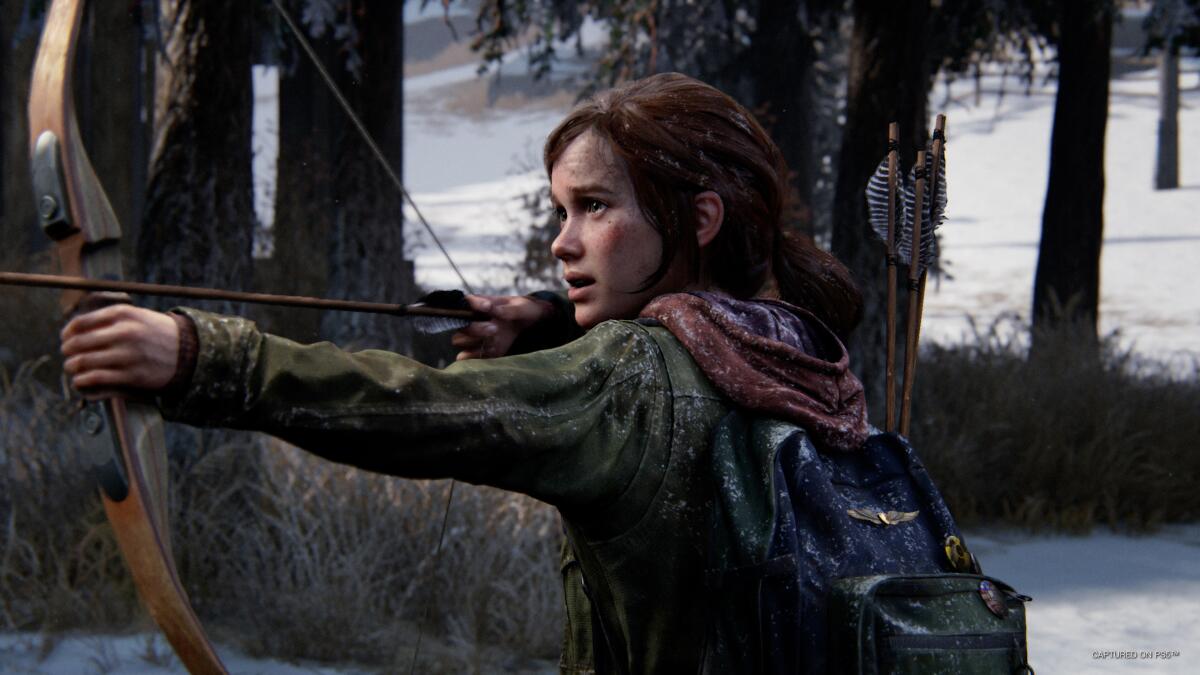
‘They hated it’
“The Last of Us” was no sure bet. In fact, early reaction, as Druckmann recalls of one marketing focus group, was strongly negative.
“We had the concept for the story, and some concept art, and the way it works is you show it to some gamers that they poll, and they respond to it,” he says. “They hated it. They’re like, ‘I have to escort a 14-year-old girl across the country? My sister is 14 and she’s annoying. I don’t want to play a game like that.’ The benefit of working at PlayStation and Naughty Dog is that PlayStation has complete trust in us. At Naughty Dog, we could look at the marketing focus group and ignore it, but it would have been a challenge to get those people to try the game. I think now things are very different.”
The studio support was always there, says Asad Qizilbash, the head of PlayStation Productions, who was working in Sony’s marketing department when “The Last of Us” was released. “When they pitched it, I was absolutely enamored,” Qizilbash says. “I remember we worked with Neil and everyone at Naughty Dog to do some research on how to best talk about this. Very early on, we were clear to not label this a zombie game. At that time, there was zombie fatigue, and it really wasn’t. It was a heartfelt story that happened to be in a post-apocalyptic world.”
That’s not to say that the game wasn’t violent. But it drew inspiration for that violence from award-winning literature and films as much as from its video game predecessors.
“I invited Neil to see ‘No Country for Old Men,’ and I remember walking out of the theater and telling him, breathlessly, ‘I’ve never played a game that had that kind of tension in it before,’” Straley says. “The street fight in ‘No Country’ was one of the most intense fights I had seen on film, and I wondered if you could play something that had that level of groundedness to it, that intensity. There’s something primal to having the controller in your hand and being in the world. Most fighting games at the time had pulled-out cameras where you saw hordes of 20-30 (non-playable characters) that you just plow through.”
We surveyed The Times TV team to come up with a list of the 75 best TV shows you can watch on Max (formerly HBO Max). And yes, your disagreement is duly noted.
Straley’s relationship with Sony and Naughty Dog has since become strained. Straley left Naughty Dog not long after the release of 2016’s “Uncharted 4: A Thief’s End,” before HBO was involved in a “Last of Us” series, and is not credited on the HBO series. He is working these days on building his own studio, Wildflower Interactive. He says the lack of credit has made him think more about workers’ rights in the video game space. “It’s an argument for unionization that someone who was part of the co-creation of that world and those characters isn’t getting a credit or a nickel for the work they put into it,” he says. “Maybe we need unions in the video game industry to be able to protect creators.” HBO and Sony declined to comment on the record.
Still, Straley remains a believer in the relevance of “The Last of Us.” If anything, recent history has him thinking the game could have been even darker.
“We weren’t real enough about the level of anxiety and tension that all of the characters would have had in that world,” Straley says. “If you go back to those early days of the pandemic — we’re not even talking about infected breaking through your front window and chewing your face off; this is just the news that there’s the possibility that you could get horribly ill, possibly die from this virus — there’s so much trauma from living through that, that I think the world of ‘The Last of Us’ would have had way more broken characters. I think people hold it together pretty well for the world that we put them in, compared to what I know about living through a pandemic.”
What made “The Last of Us” a lasting success, however, is that it coupled the trauma with a certain optimism: “I’m an immigrant,” says Druckmann, who grew up on the West Bank, “and to me, ‘The Last of Us’ is a love letter to what I love about this country.
“That’s why you see such beautiful landscapes. It was important to me to express the beauty of what I see in this country. There’s a lot to criticize about the United States, and we won’t get into that in this interview, but America’s superpower is this melting pot, in that everywhere you look you see a different person from a different walk of life — a different political spectrum, race, identity. I think there’s something beautiful about that. I think ‘The Last of Us,’ for it to be authentic to take place in the United States, has to explore all those kinds of characters.”
Watch L.A. Times Today at 7 p.m. on Spectrum News 1 on Channel 1 or live stream on the Spectrum News App. Palos Verdes Peninsula and Orange County viewers can watch on Cox Systems on channel 99.
More to Read
The biggest entertainment stories
Get our big stories about Hollywood, film, television, music, arts, culture and more right in your inbox as soon as they publish.
You may occasionally receive promotional content from the Los Angeles Times.
